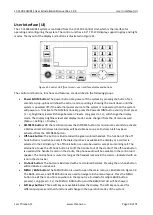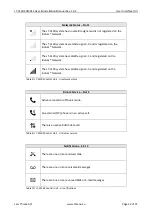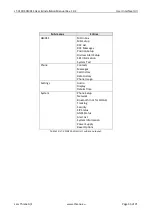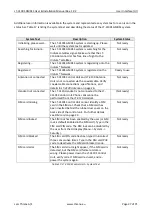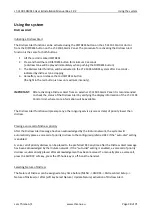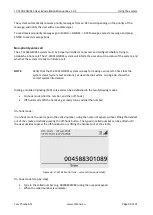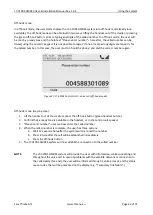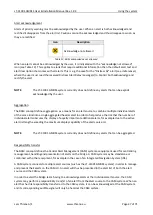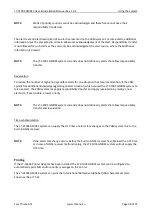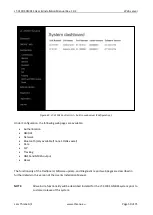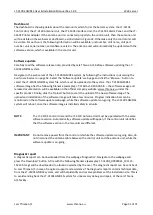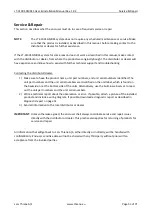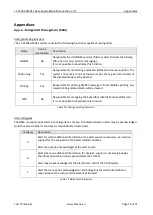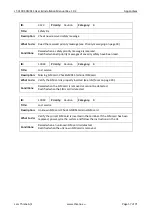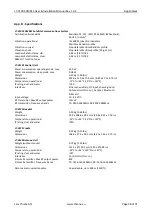
LT-3100S GMDSS User & Installation Manual Rev. 1.02
Using the system
Lars Thrane A/S
www.thrane.eu
Page 44 of 71
Position of vessel
The system is configured to default use the built-in GNSS receiver (automatic mode) for determining the
current position of the vessel. The system has two primary uses for the current position:
•
It is automatically included in Distress Alert messages sent to the preferred RCC upon activation of
Distress Alert
•
It is required for receiving MSI messages relevant for the vessel
In case the built-in GNSS receiver malfunctions or if the user for some other reason (e.g. GNSS spoofing) is
required to manually enter the current position of the vessel, this can be done from MENU -> GMDSS ->
Position Setup:
1.
Select Source of Position and press ENTER
2.
Select Manual Input and press ENTER
3.
Fill in the Latitude and Longitude fields
4.
Fill in the Time of Position field with the time in UTC at which the vessel was at the position entered
in the Latitude and Longitude fields.
NOTE:
This may
not
be the current time.
5.
The Course over Ground (COG) and Sped over Ground (SOG) are optional and can be set to zero if
unknown.
6.
When all fields have been assigned a value, press Apply soft key to apply the manual position
NOTE
:
The manual position should be updated minimum every 4 hours.
Bridge Alert Management
Bridge Alert Management (BAM) is the IMO defined overall concept for the harmonized management,
distribution, handling and presentation of alerts on the bridge, to enable the bridge team to devote full
attention to the safe operation of the ship and to immediately identify any alert situation requiring action
to maintain the safe operation of the ship. The LT-3110S GMDSS system implements the BAM concept in
compliance with the relevant standards (see <reference>).
BAM status
The LT-3100S GMDSS system continuously monitor for fault conditions (e.g. no satellite signal) and other
events (e.g. received distress communication) that requires the attention of the bridge team and raises
relevant alerts. The user can, at any time, check for the presence of alerts without performing any action: if
there are one or more active alerts, a BAM icon representing the alert with the highest priority is shown in
the status bar (see Figure 40). The exact icon shown depends on the priority and state of the alert with the
Figure 40: LT-3110S Control Unit - UI BAM status

